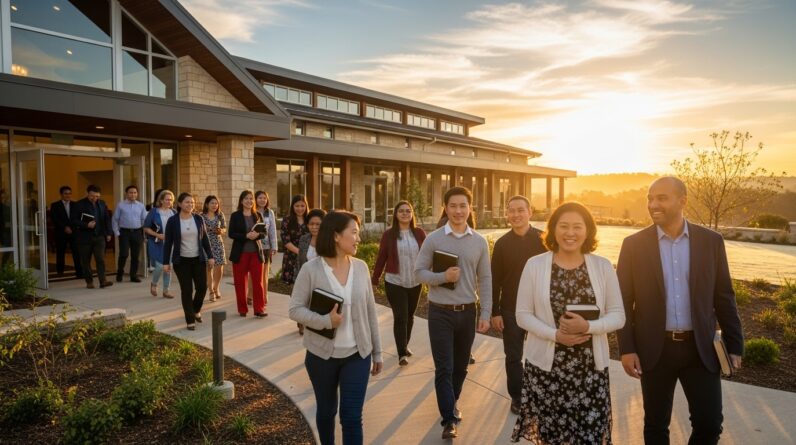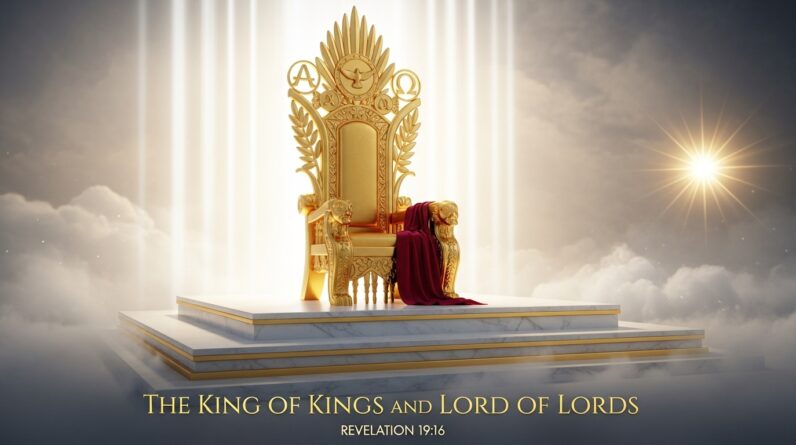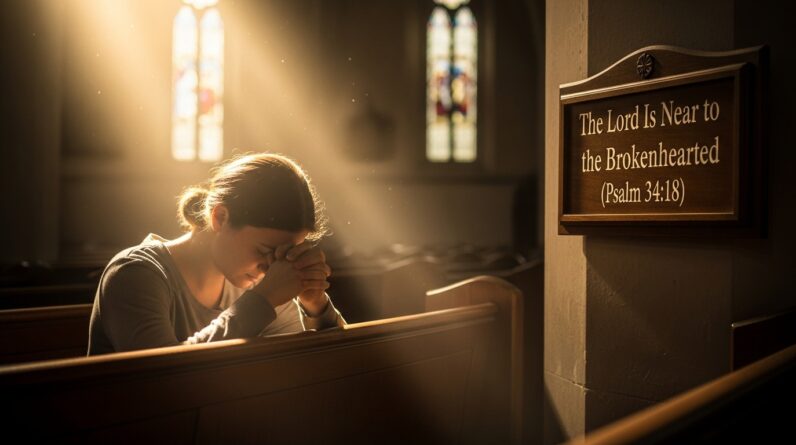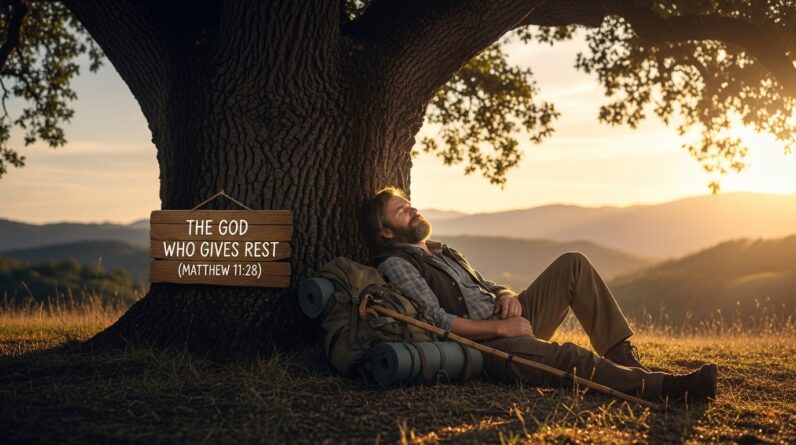Explore the timeless story of Adam and Eve from Genesis 2:7-25, uncovering the origins of humanity, divine relationships, and enduring life lessons. Dive in!
Imagine stepping into a world newly created, fresh with divine breath and untouched by human hands. In this article, you’ll explore the timeless story of Adam and Eve from Genesis 2:7-25, a narrative that has shaped countless spiritual and cultural landscapes. Discover the origins of humanity, the profound bond between man and woman, and the enduring lessons embedded in these ancient verses.
Adam and Eve – Genesis 2:7-25
In the beginning, there was…a lump of dirt. But not just any old dirt; no, this was divine dirt. Let’s take a journey back to the earlier pages of the book of Genesis, where the story of Adam and Eve unfurls like a charming yet complicated family drama. You’ll find it all in Genesis 2:7-25—a tale that sets the stage for humanity as we know it. Ready to dive into the primordial ooze of biblical history? Buckle up; it’s going to be a wild ride.
The Creation of Man – Genesis 2:7
Imagine it: a smooth expanse of the earth, resplendent and lush, but conspicuously devoid of life. Enter God, who, with the skill and finesse of a master sculptor, forms a man from the dust of the ground. This isn’t just any DIY project; it’s the inauguration of humanity—the first rough draft, if you will.
Breathing into the man’s nostrils the breath of life, God bestows upon him the gift of consciousness, turning clay into a living being. Think of this moment as the divine equivalent of switching on your smartphone for the first time. Eyes flicker open, and voila! Adam is born.
The Garden of Eden
No birth story is complete without describing the setting, and for Adam, it’s pretty fancy. God plants a garden in Eden, a veritable utopia filled with an array of lush, verdant vegetation. This isn’t just any garden; it’s the kind of place where every plant seems to scream, “I’m fabulous!” Rivers flow, trees flourish, and somewhere a bird probably chirped an early rendition of Mozart.
In this perfect locale, Adam enjoys tranquil fellowship with nature. He’s surrounded by fruit-bearing trees, all tantalizingly ripe and ready for picking. But amid all the botanical splendor, God places two significant trees: the Tree of Life and the Tree of the Knowledge of Good and Evil. Mysterious, right?

Adam’s First Job
As idyllic as Eden is, lounging around gets old. So, Adam gets a job—gardener, by divine appointment. Genesis 2:15 declares, “The LORD God took the man and put him in the Garden of Eden to work it and take care of it.” Quite the task, but hey, at least the commute is short.
More than just physical labor, Adam is entrusted with a pivotal responsibility. God parades the animals—every wild beast and bird—before him, seeking names for each. It’s like a cosmic roll call, where Adam takes on the role of the ultimate zoologist. You could almost hear him deciding, “You look like a platypus to me.”
The Creation of Woman – Genesis 2:18-22
Despite the Edenic splendor, something is amiss. Adam seems a bit lonely. Up until now, he’s been living it up solo, but Genesis 2:18 reveals God’s insight: “It is not good for the man to be alone. I will make a helper suitable for him.” Sounds like the first inkling of matchmaking.
Eve’s Grand Entrance
In a scene that could rival any dramatic soap opera, God places Adam into a deep sleep—think of it as the original anesthesia. As Adam snores away, God extracts one of his ribs and crafts it into a woman. Her name? Eve.
Eve’s creation isn’t just an interesting anatomical footnote; it signifies something beautiful. She is not made from Adam’s head to rule over him, nor from his feet to be trampled upon, but from his rib—close to his heart—to be his equal companion.
When Adam awakens and meets Eve, he proclaims in Genesis 2:23, “This is now bone of my bones and flesh of my flesh; she shall be called ‘woman,’ for she was taken out of man.” It’s as if Adam is both amazed and profoundly touched by this divine matchmaking.
Life in Eden
Newly paired, Adam and Eve find themselves in the lap of paradise. Life in Eden would make any travel brochure look dull, yet there are nuances and boundaries.
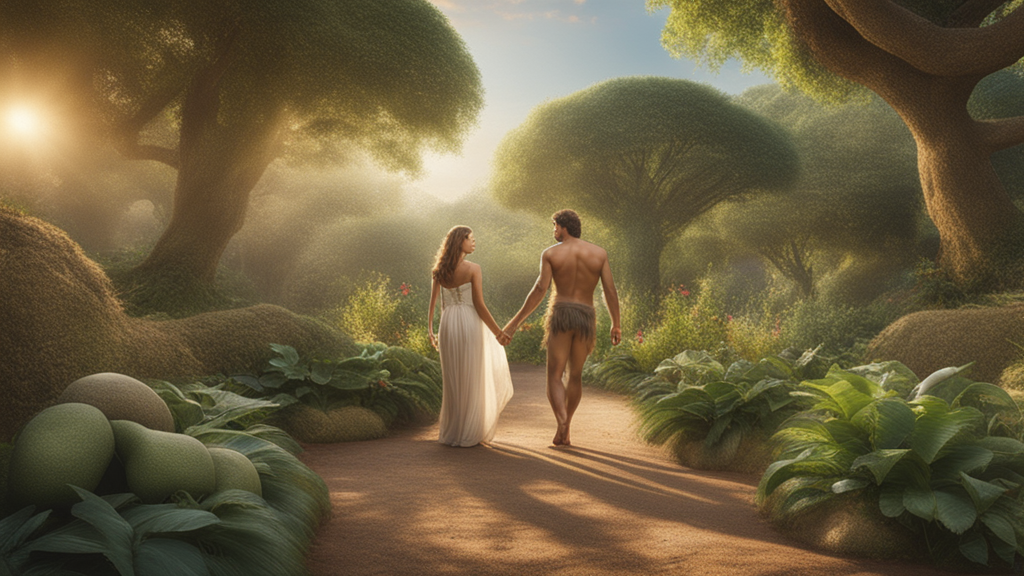
The Prohibition
Everything is perfect, right? Well, almost. God issues a single command to our couple: eat freely of every tree except one—the Tree of the Knowledge of Good and Evil. Genesis 2:17 is explicit: “But you must not eat from the tree of the knowledge of good and evil, for when you eat of it you will surely die.” One rule—simple enough, in theory.
But who doesn’t love a touch of forbidden fruit? It adds a sprinkle of temptation to an otherwise idyllic existence, doesn’t it?
The Harmony of Eden
Beyond this divine prohibition, the couple lives in harmony with nature and each other. They’re naked and unashamed, embodying perfect innocence. Their relationship exemplifies mutual dependence and companionship, a harmony that even the best relationship counselors might envy. Living in unspoiled bliss, daily life is a rhythm of contentment and unity.
Theological Insights
While Genesis 2:7-25 offers a vivid tale, it also brims with deeper theological significance. Questions about humanity’s origins, the nature of relationships, and the essence of divine commandment—all find embryo forms in these verses.
The Image of God
Firstly, Adam and Eve are created in the “image of God.” This isn’t about physical appearance but more about spiritual, moral, and intellectual likeness. It implies a kind of divine legacy, a reflection of God’s attributes in human nature. You are more than just animated biology; you are a bearer of divine resemblance.
The Meaning of ‘Helper’
The term “helper” for Eve has often been misconstrued as diminutive. But in the original Hebrew, “ezer” is far from subservient. It connotes strength and aid, akin to how God is described as a helper to humanity. Eve’s role is complementary and essential, enriching Adam’s existence.
Free Will and Obedience
With the prohibition of the Tree of the Knowledge of Good and Evil, Genesis introduces the concept of free will. Adam and Eve are endowed with the ability to choose, a cornerstone of human dignity and moral responsibility. Their obedience or disobedience signifies the profound relationship between humanity and divine law.
The Lessons and Legacy
Genesis 2:7-25 isn’t just ancient history; it’s a rich source of wisdom relevant to contemporary life. It speaks about our quest for identity, companionship, and moral orientation.
Relationships
The creation of Eve underscores the importance of relationships. We are intrinsically social beings, designed for companionship. It’s not just about romantic relationships but extends to friendships and community bonds. Wouldn’t you agree that life feels richer when shared with others?

Stewardship
Adam’s role in tending the Garden of Eden marks the beginning of humanity’s stewardship over the Earth. It’s a call to responsible living and sustainability. With great power comes great responsibility, as a wise uncle once said.
Obedience and Moral Choices
Finally, free will and divine commandment remind us of the significance of our choices. Every day we stand at metaphoric trees of knowledge, making decisions that shape our lives and the world around us. It’s a narrative that invites you to ponder your moral compass.
Key Events in Genesis 2:7-25
To make things a bit easier, here is a table summarizing the main points of Genesis 2:7-25:
| Verse | Event Description |
|---|---|
| Genesis 2:7 | Creation of Adam from the dust of the ground |
| Genesis 2:8-9 | Planting of the Garden of Eden, inclusion of two significant trees |
| Genesis 2:15 | Adam’s placement in Eden to work and take care of it |
| Genesis 2:17 | Prohibition against eating from the Tree of Knowledge |
| Genesis 2:18 | Realization that Adam needs a suitable helper |
| Genesis 2:19-20 | Naming of the animals by Adam |
| Genesis 2:21-22 | Creation of Eve from Adam’s rib |
| Genesis 2:23-25 | Union of Adam and Eve, establishing harmonious living |
The Significance Today
The narrative of Adam and Eve might seem ancient, but its relevance persists. It offers insights into who we are, where we come from, and how we should live. It’s a timeless story unfolding the human experience—themes of creation, fall, redemption, and relationship reverberate in our lives today.



